Agile methodology has revolutionized project management, enabling teams to embrace flexibility, collaboration, and continuous improvement. However, understanding and effectively using agile terminology is crucial for success in this dynamic environment.
This comprehensive guide dives deep into agile terminology, providing a solid understanding of key concepts and their practical application, and will act as your go-to agile glossary. Whether you’re new to agile or looking to enhance your knowledge, this guide will serve as a valuable resource.
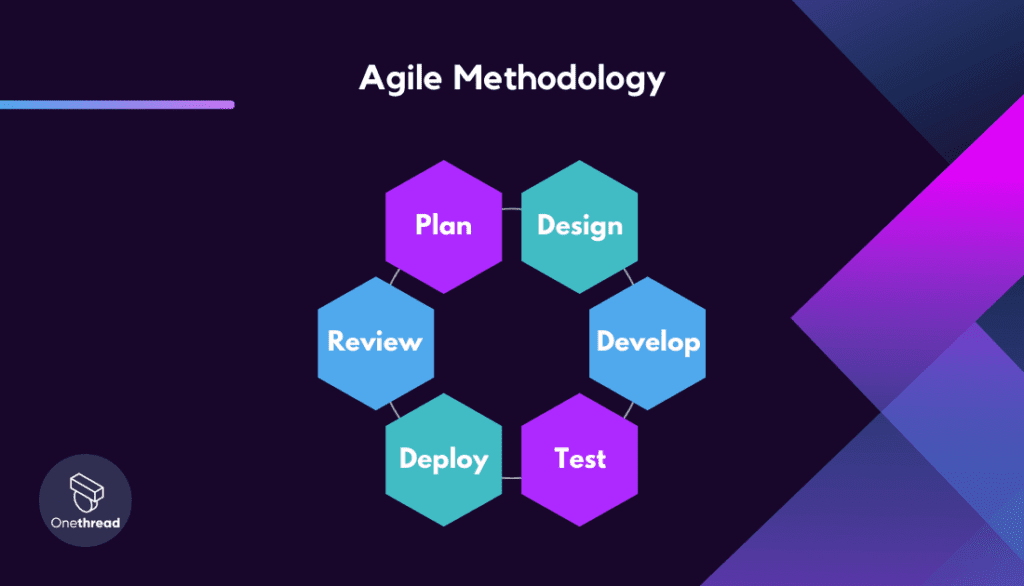
Give Onethread a try to present your ideas visually rather than sending files back and forth!
What is Agile Methodology?
Agile methodology is an iterative approach to project management that focuses on delivering value to customers through incremental development and continuous feedback.
By emphasizing collaboration, adaptability, and customer-centricity, agile methodology enables teams to respond quickly to changing requirements and deliver high-quality products. In this section, we’ll explore the definition, principles, and benefits of agile methodology and the significance of the Agile Manifesto.
Definition and Principles of Agile Method
Agile methodology is a project management approach that prioritizes flexibility, iterative development, and customer collaboration.
It values individuals and interactions over processes and tools, working software over comprehensive documentation, customer collaboration over contract negotiation, and responding to change over following a plan.
These principles guide agile teams in delivering value early and often, embracing change, and fostering continuous improvement.
Benefits and Advantages of Agile Method
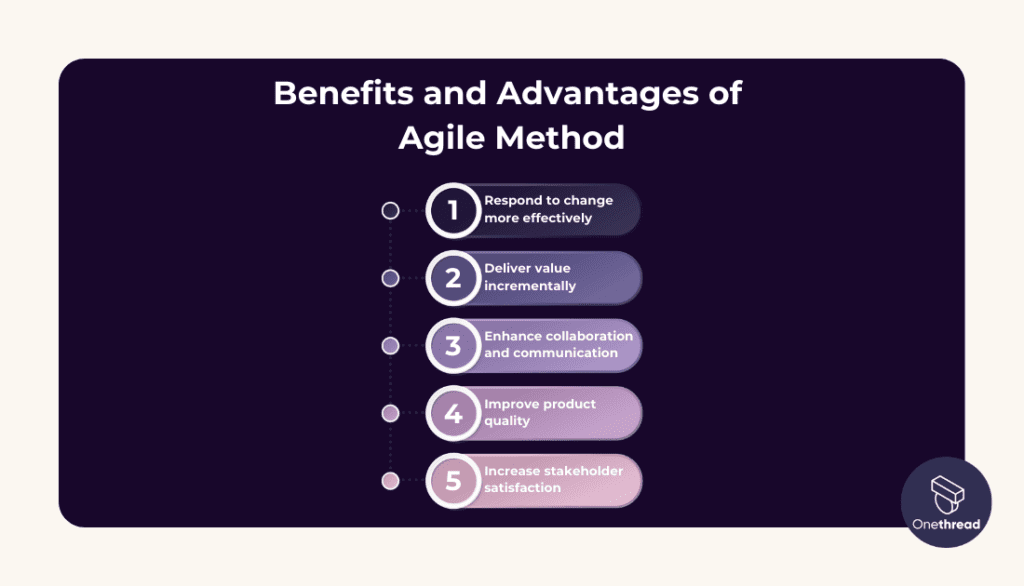



Agile methodology offers numerous benefits for project teams and organizations. By promoting adaptive planning, regular feedback, and continuous improvement, agile methodologies enable teams to:
- Respond to change more effectively: Agile teams can quickly adapt to changing requirements and market conditions, ensuring that the delivered product remains aligned with customer needs.
- Deliver value incrementally: Through iterative development and frequent releases, agile teams can deliver valuable functionality throughout the project, ensuring customer satisfaction and early return on investment.
- Enhance collaboration and communication: Agile methodologies emphasize collaboration among team members, stakeholders, and customers, fostering better communication, shared understanding, and teamwork.
- Improve product quality: Agile practices such as continuous integration, test-driven development, and frequent feedback loops help identify and address issues early, leading to higher-quality products.
- Increase stakeholder satisfaction: By involving stakeholders throughout the project and regularly incorporating their feedback, agile teams can better meet their expectations and ensure customer satisfaction.
Agile Manifesto and its Significance
The Agile Manifesto, published in 2001, serves as the foundation for agile methodologies. It consists of four core values and twelve principles that guide agile teams in their approach to project management.
The Agile Manifesto emphasizes customer collaboration, iterative development, and the importance of individuals and interactions. By adhering to the principles outlined in the Agile Manifesto, teams can embrace agility and deliver successful projects.
Key Agile Terminology Explained
To effectively navigate the world of agile methodology, it’s essential to understand the commonly used agile terminology.
This section will delve into key agile terminology and explain its definitions, purpose, and practical implementation.
By familiarizing yourself with these agile terms, you’ll be better equipped to communicate, collaborate, and excel in agile projects.
1. Acceptance Test-Driven Development (ATDD)
Definition and Importance of ATDD
Acceptance Test-Driven Development (ATDD) is a collaborative approach that involves defining acceptance criteria based on customer requirements before development begins.
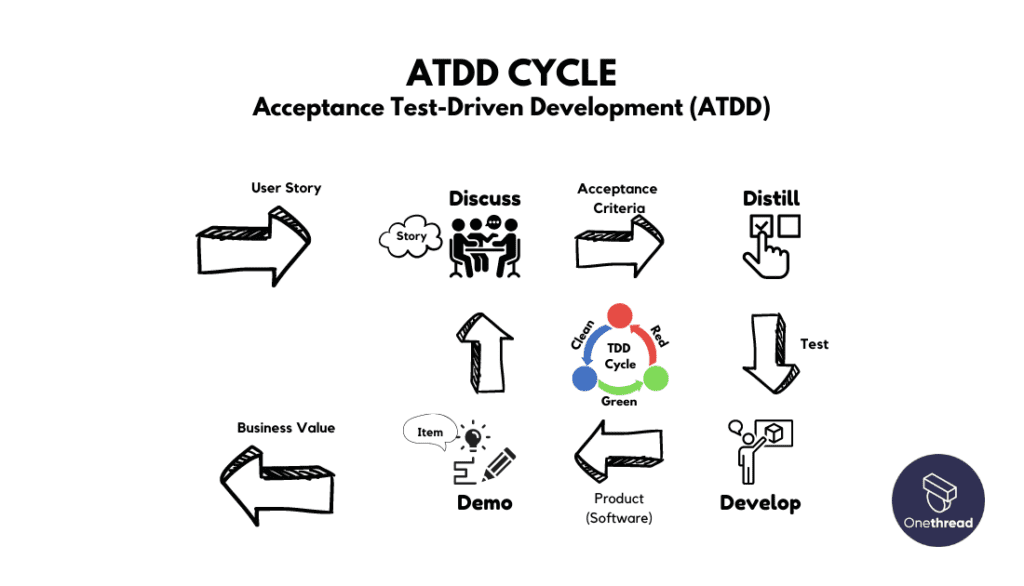



By creating acceptance tests early in development, teams can ensure that the software meets the desired functionality and deliverables.
Benefits and Implementation of ATDD
ATDD offers several benefits, including improved clarity, reduced rework, and increased customer satisfaction. By involving customers and stakeholders in the acceptance criteria definition process, teams gain a shared understanding of project requirements.
ATDD can be implemented through collaboration between developers, testers, and product owners to establish clear acceptance criteria and automated tests that validate them.
2. Acceptance Testing
Definition and Purpose of Acceptance Testing
Acceptance testing is a crucial phase in the software development life cycle that verifies if a system meets the specified requirements and is ready for deployment.
It involves running tests that simulate real-world scenarios to ensure that the software functions as intended and satisfies user expectations.
Techniques and Tools for Acceptance Testing
Various techniques and tools are available for conducting acceptance testing, including manual testing, automated testing frameworks, and behavior-driven development (BDD) tools like Cucumber or SpecFlow.
These tools enable teams to write tests in a human-readable format, enhancing collaboration and ensuring that the software meets the desired acceptance criteria.
3. Antipatterns in Agile
Understanding Antipatterns and their Impact
Antipatterns are common pitfalls, mistakes, or counterproductive practices that hinder the success of agile projects. These patterns emerge when teams deviate from agile principles or adopt practices that undermine project efficiency, quality, or collaboration.
Understanding and identifying antipatterns is essential for overcoming obstacles and promoting successful agile project delivery.
Common Antipatterns to Avoid in Agile Projects
To foster success in agile projects, it’s crucial to identify and address common antipatterns. Some examples include “Waterfall Agile,” where agile practices are superficially implemented within a traditional waterfall approach, and “Individual Heroics,” where one team member dominates the work, hindering collaboration.
By avoiding these antipatterns and adopting agile best practices, teams can maximize their chances of success.
4. Automated Build
Introduction to Automated Build Process
The automated build process involves automatically compiling, testing, and packaging the software whenever changes are made to the codebase.
It ensures that the software remains in a deployable state, reducing the risk of manual errors and enabling teams to deliver new features quickly and reliably.
Tools and Practices for Implementing Automated Build
Several tools, such as Jenkins, CircleCI, and Travis CI, facilitate the implementation of automated build processes. These tools integrate with version control systems and provide features for building, testing, and deploying software.
By adopting continuous integration practices and leveraging these tools, teams can streamline the development and delivery process, reducing the time between code changes and deployment.
5. Backlog Refinement
Definition and Objectives of Backlog Refinement
Backlog refinement, also known as backlog grooming, is the process of continuously reviewing, refining and prioritizing items in the product backlog.
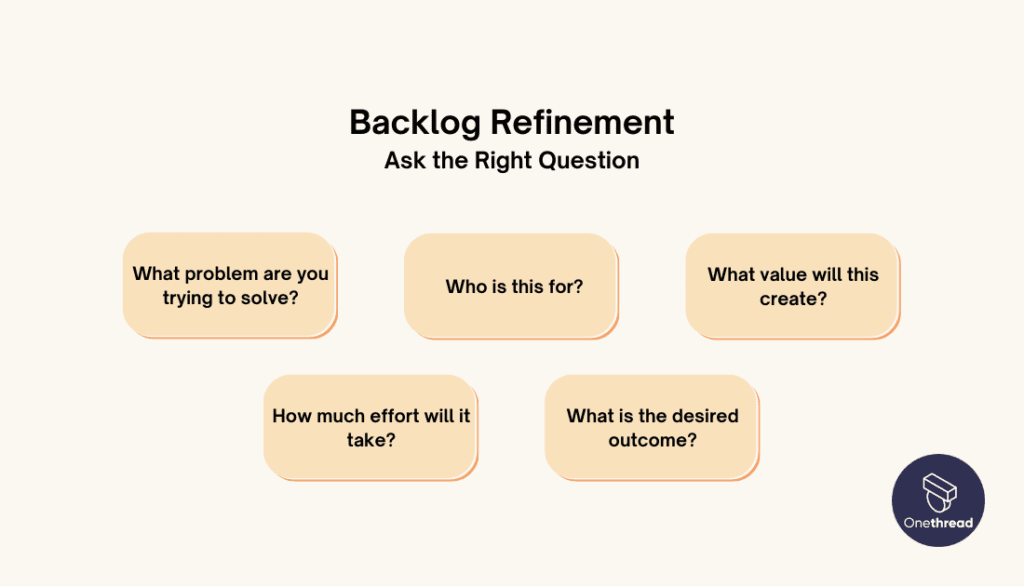



The goal is to ensure that the backlog contains well-defined, valuable, and feasible user stories that are ready to be pulled into upcoming sprints.
Techniques for Effective Backlog Refinement
Effective backlog refinement involves collaborative efforts among the product owner, development team, and stakeholders. Techniques such as user story splitting, defining acceptance criteria, and estimating effort help refine backlog items.
Regular refinement sessions, backlog prioritization exercises, and stakeholder feedback play vital roles in keeping the product backlog healthy and manageable.
6. Behavior-Driven Development (BDD)
Overview and Principles of BDD
Behavior Driven Development (BDD) is an agile software development approach that emphasizes collaboration between stakeholders with different roles, such as business analysts, developers, and testers. BDD focuses on defining and automating testable, business-centric behaviors or scenarios.
Role of BDD in Agile Software Development
BDD helps bridge the gap between technical and non-technical team members by providing a shared language for defining requirements and expected behaviors.
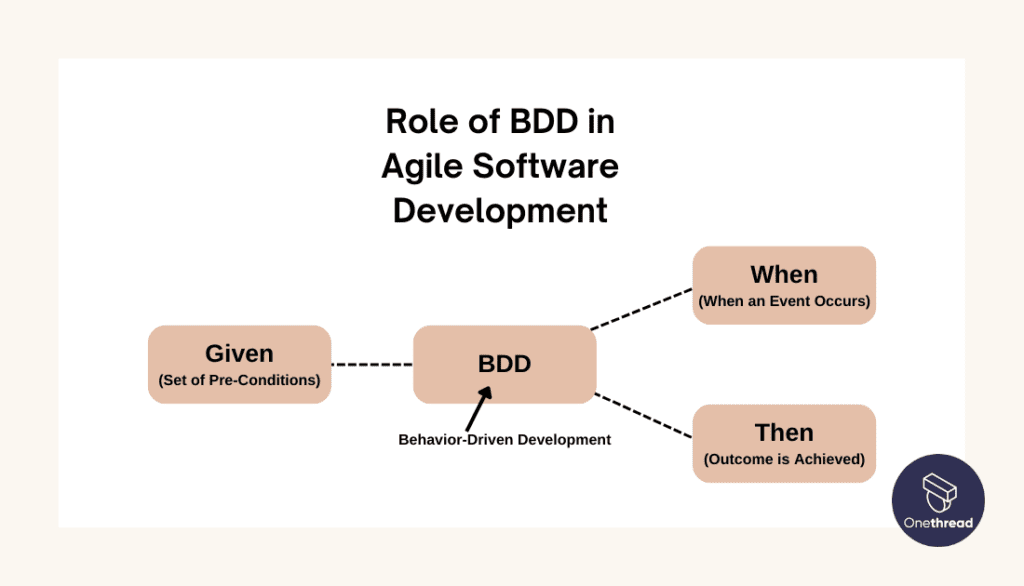



Techniques like the Given-When-Then (GWT) format facilitate clear communication, aligning stakeholders’ expectations and enabling the creation of automated tests that validate the desired behaviors.
7. Burndown Chart
Understanding Burndown Charts and their Purpose
A burndown chart visually represents the work remaining in a sprint or project. It shows the progress of completed work against the projected rate of work completion. Burndown charts provide valuable insights into project velocity, helping remote teams monitor progress and make informed decisions.
Interpreting and Analyzing Burndown Charts
Burndown charts track the remaining work over time, allowing teams to assess whether they are on track to meet their goals. An upward slope on the chart indicates that the team is falling behind, while a downward slope suggests progress is being made.
By analyzing the burndown chart, teams can identify potential issues, adapt their plans, and take corrective actions to ensure successful sprint or project completion.
8. Business Agility
Meaning and Importance of Business Agility
Business agility refers to an organization’s ability to respond quickly and effectively to changes in the market, customer needs, or internal dynamics. It encompasses the organization’s ability to adapt, innovate, and seize opportunities in a rapidly evolving business landscape.
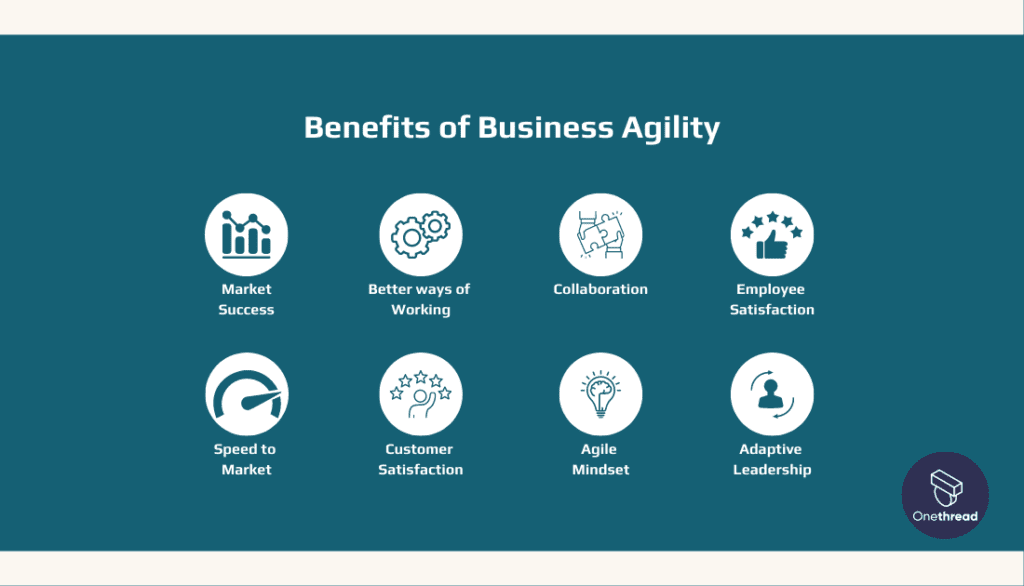



Strategies for Achieving Business Agility
Organizations can adopt practices such as embracing agile methodologies, fostering a culture of continuous learning and improvement, empowering teams, and encouraging cross-functional collaboration to achieve business agility.
Creating an environment that promotes flexibility, responsiveness, and innovation is key to thriving in today’s dynamic business environment.
9. Collective Ownership
Concept and Benefits of Collective Ownership
Collective ownership is an agile principle that emphasizes shared responsibility and accountability among team members. It encourages collaboration, knowledge sharing, and cross-functionality, enabling teams to leverage diverse skills and perspectives for successful project delivery.
Fostering Collective Ownership in Agile Teams
Fostering collective ownership requires establishing a culture of trust, open communication, and shared goals. By encouraging knowledge sharing, cross-training, and rotating responsibilities, teams can build a sense of ownership and mutual support.
This approach helps minimize bottlenecks, ensures continuity, and promotes a cohesive team environment.
10. Continuous Deployment
Definition and Advantages of Continuous Deployment
Continuous Deployment is an agile practice that enables teams to automatically deploy software changes to production environments as soon as they pass predefined tests and quality checks.
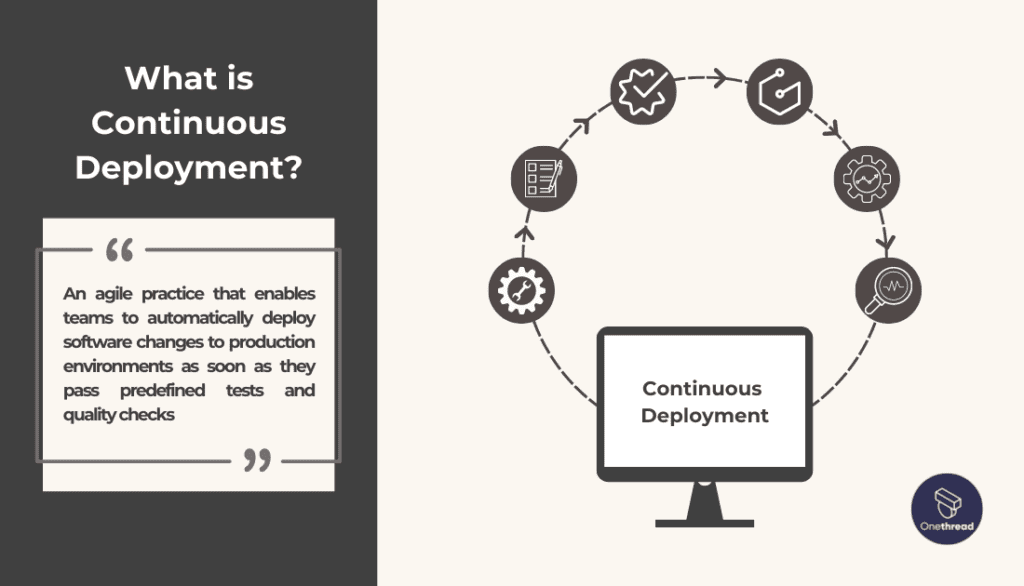



It allows for rapid, frequent, and reliable software releases, enhancing the speed of delivering new features and improvements.
Implementing Continuous Deployment in Agile Projects
To implement continuous deployment, teams must establish an automated deployment pipeline that includes comprehensive testing, code review, and quality assurance processes.
Tools like Jenkins, GitLab CI/CD, and AWS CodePipeline facilitate the automation of these deployment workflows. Continuous monitoring and robust rollback mechanisms ensure the stability and reliability of the deployed software.
11. Continuous Integration
Introduction to Continuous Integration (CI)
Continuous Integration (CI) is an agile practice that frequently integrates multiple developers’ code changes into a shared repository. It aims to detect integration issues early, promote collaboration, and ensure the stability and quality of the codebase.
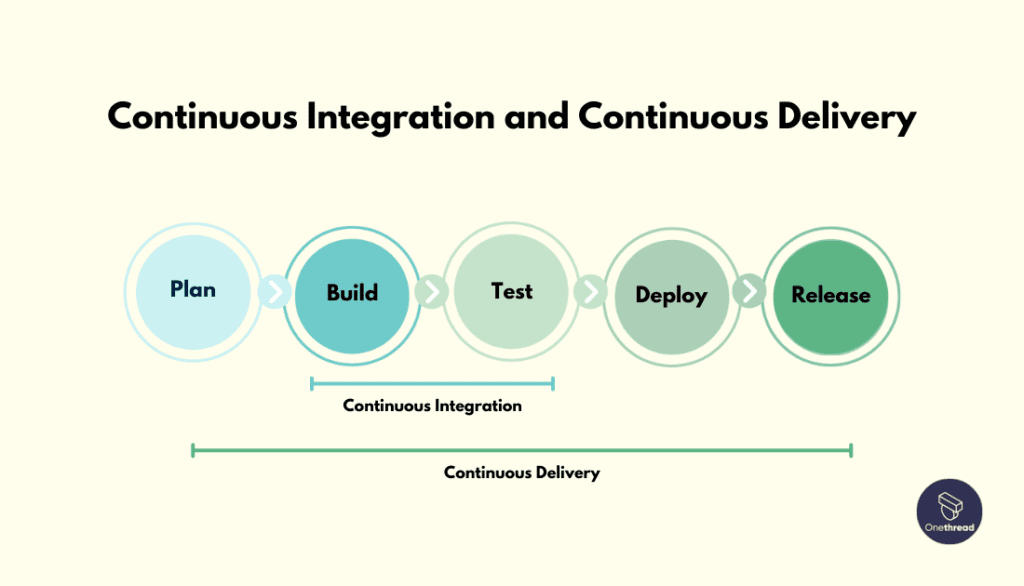



Best Practices for Implementing Continuous Integration
To implement continuous integration effectively, teams should establish automated build and test processes, adopt version control systems, and define clear coding standards.
Teams can maintain a healthy and stable codebase by integrating code changes frequently, running automated tests, and resolving integration conflicts promptly.
12. CRC Cards (Class-Responsibility-Collaborator Cards)
Purpose and Benefits of CRC Cards
CRC (Class-Responsibility-Collaborator) cards are a visual technique used in agile software development to analyze and design object-oriented systems. They help teams understand class responsibilities and collaborations, facilitate discussions, and promote effective design decisions.
Using CRC Cards in Agile Software Development
CRC cards are typically physical index cards or digital representations that document class names, responsibilities, and collaborators. By using CRC cards during design sessions, teams can visualize and refine their understanding of the system’s structure and relationships.
This technique encourages collaboration, ensures comprehensive analysis, and aids in designing robust object-oriented systems.
13. Customer Development in Agile
Exploring the Customer Development Process
Customer Development is an agile methodology that focuses on deeply understanding customer needs and iteratively validating product-market fit. It involves engaging with potential customers, gathering feedback, and adjusting product development strategies based on customer insights.
Incorporating Customer Development in Agile Projects
To incorporate customer development effectively, teams should engage in customer interviews, surveys, and usability testing activities.
These activities help validate assumptions, identify pain points, and ensure that the product aligns with customer expectations. By involving customers throughout the development process, teams can build products that truly address customer needs.
14. Daily Stand-up Meeting
Importance and Structure of Daily Stand-up Meetings
The daily stand-up meeting, or the daily scrum or huddle, is a short, time-boxed meeting where team members discuss progress, challenges, and plans for the day. It serves as a mechanism for synchronizing team activities, promoting transparency, and identifying and removing impediments.
Tips for Conducting Effective Daily Stand-ups
To conduct effective daily stand-up meetings, teams should adhere to a structured format and keep the meeting focused and time-bound. Each team member should answer three key questions: What did I do yesterday? What will I do today? Are there any blockers or impediments?
By fostering open communication and collaboration during these meetings, teams can stay aligned and address any obstacles efficiently.
15. Definition of Done (DoD)
Significance and Components of Definition of Done
The definition of Done (DoD) is a shared understanding within the team of what constitutes a completed user story or product increment.
Work must meet specific criteria before it can be considered complete and released.
Establishing and Maintaining the Definition of Done in Agile
involves collaborative efforts between the development team, product owner, and stakeholders. It should reflect quality standards, testing requirements, and any specific criteria relevant to the project. Regularly reviewing and updating the Definition of Done ensures that the team maintains a shared understanding of the expectations and delivers high-quality, releasable increments.
16. Definition of Ready (DoR)
Understanding the Concept of the Definition of Ready
It ensures that user stories and backlog items are sufficiently refined, understood, and ready for development before they can be pulled into a sprint.
Implementing the Definition of Ready for Effective Agile Planning
To effectively implement the Definition of Ready, teams should establish clear guidelines and expectations for backlog items.
These criteria may include elements such as well-defined acceptance criteria, clear user story descriptions, and any necessary dependencies or prerequisites. By adhering to the Definition of Ready, teams can streamline sprint planning and improve the accuracy of sprint commitments.
17. Estimation Techniques in Agile
Overview of Agile Estimation Methods
Agile estimation techniques helps teams determine work items’ effort, duration, and complexity. Various methods, such as Planning Poker, Relative Estimation, and Story Points, enable teams to make informed estimates and plan their work effectively.
Choosing the Right Estimation Technique for Agile Projects
Choosing the appropriate estimation technique depends on factors such as team size, project complexity, and level of uncertainty. Teams can select the estimation method that best suits their needs and context, ensuring accurate and reliable estimates.
It’s important to note that estimation in agile is a collaborative effort that involves the entire team and aims for a shared understanding of the work involved.
18. Exploratory Testing
Introduction to Exploratory Testing in Agile
An agile testing technique involves simultaneous learning, test design, and execution. It focuses on actively exploring the software to uncover defects, learn more about its behavior, and provide valuable feedback to the development team.
Techniques and Benefits of Exploratory Testing
Exploratory testing relies on testers’ skills, domain knowledge, and creativity to uncover hidden issues and risks. Techniques such as session-based testing and tours provide structure and guidance for exploratory testing sessions.
The benefits of exploratory testing include increased test coverage, early defect detection, and a better understanding of the software’s behavior and quality.
19. Facilitation in Agile
Role of Facilitation in Agile Environments
Facilitation plays a crucial role in fostering collaboration, enabling effective communication, and guiding agile ceremonies and workshops. A skilled facilitator creates an environment where team members can openly share ideas, collaborate on problem-solving, and reach consensus.
Techniques for Effective Facilitation in Agile Teams
Effective facilitation techniques include active listening, managing group dynamics, visualizing information, and fostering a safe and inclusive environment. Facilitators encourage participation, mediate conflicts, and ensure that discussions and activities stay focused and productive.
By leveraging these techniques, teams can maximize their collaborative potential and drive successful outcomes.
20. Frequent Releases
Benefits and Strategies for Frequent Releases
Frequent releases, also known as continuous delivery or rapid deployment, involve delivering new software increments frequently and reliably to end-users. This practice offers several benefits, including faster feedback cycles, increased customer satisfaction, and the ability to respond quickly to market changes.
Overcoming Challenges in Frequent Release Cycles
To overcome challenges associated with frequent releases, teams should adopt practices such as continuous integration, automated testing, and infrastructure automation.
By streamlining the release process, ensuring robust quality assurance, and closely collaborating with stakeholders, teams can confidently embrace frequent releases and reap the associated benefits.
Agile Terminology Related to Frameworks and Methodologies
1. Test-Driven Development (TDD)
Overview and Benefits of Test-Driven Development
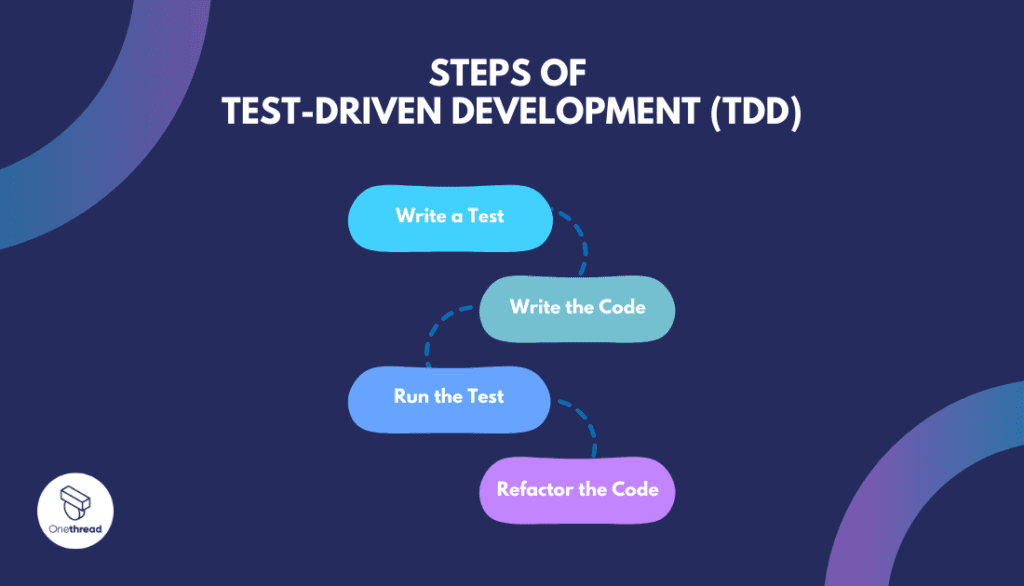



Test-Driven Development (TDD) is a software development practice that emphasizes writing tests before writing the code. The process involves the following steps:
- Write a Test: Developers write a failing test case that defines the expected behavior of the code.
- Write the Code: Developers write the code that fulfills the requirements of the test case.
- Run the Test: Developers run the test to ensure that the code meets the expected behavior.
- Refactor the Code: Developers refactor the code to improve its design while ensuring the tests still pass.
TDD offers several benefits, including:
- Improved Code Quality: TDD encourages developers to write code that is modular, testable, and maintainable, resulting in higher-quality software.
- Fast Feedback: The immediate feedback loop provided by TDD allows developers to identify and fix issues quickly, leading to faster development cycles.
- Regression Testing: By continuously running tests during development, TDD helps identify and prevent regressions, ensuring that existing functionality remains intact.
- Design Emergence: TDD promotes a design-driven approach where the code evolves organically based on the tests, resulting in a more flexible and adaptable architecture.
2. Agile Team Dynamics and Collaboration
Building High-Performing Agile Teams
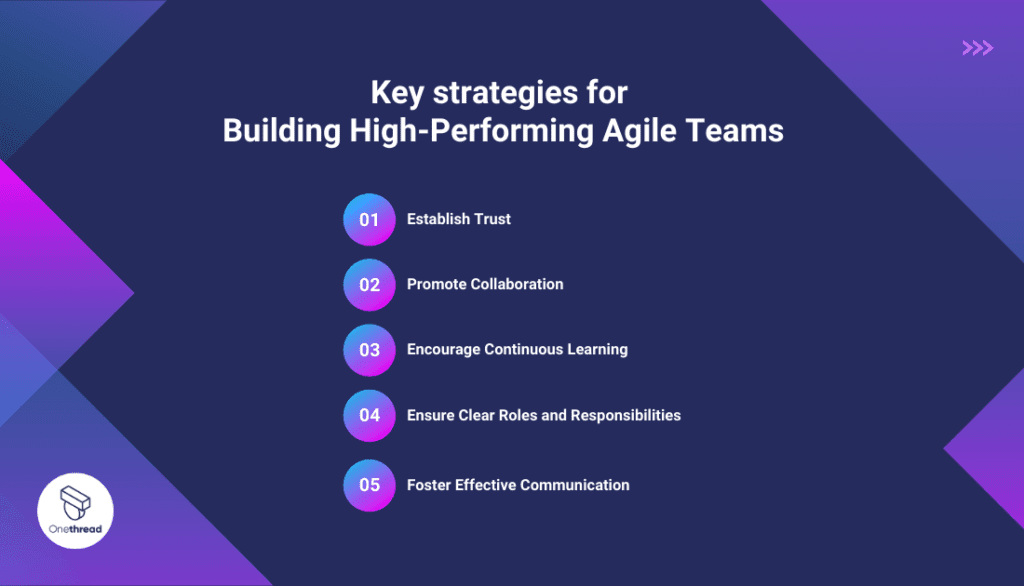



Creating high-performing agile teams is crucial for successful project delivery. Here are key strategies for building and fostering effective team dynamics and collaboration:
- Establish Trust: Encourage open and honest communication, foster a safe environment where team members can share ideas and concerns freely, and build trust among team members.
- Promote Collaboration: Emphasize teamwork, cross-functional collaboration, and collective decision-making. Foster a culture of sharing knowledge, skills, and responsibilities.
- Encourage Continuous Learning: Support a learning mindset within the team, provide opportunities for skill development, and encourage sharing best practices.
- Ensure Clear Roles and Responsibilities: Clearly define roles and responsibilities within the team to promote clarity, accountability, and effective collaboration.
- Foster Effective Communication: Promote regular and transparent communication channels, conduct efficient meetings, and leverage collaboration tools to facilitate communication and knowledge sharing.
By focusing on these strategies, agile teams can enhance their performance, increase productivity, and deliver better results.
3. Team Room Setup and Agile Workspace Design
Creating a Productive and Collaborative Team Room
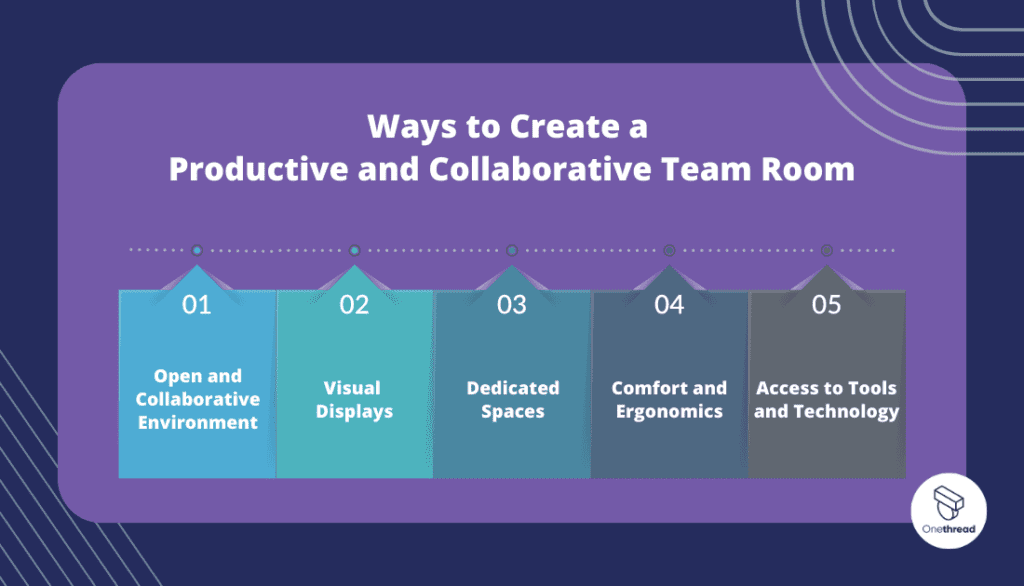



The physical workspace plays a significant role in fostering collaboration and productivity within agile teams. Here are key considerations for setting up a productive team room:
- Open and Collaborative Environment: Design the space to facilitate communication and collaboration, with open seating arrangements that encourage interaction among team members.
- Visual Displays: Use whiteboards, task boards, and information radiators to visualize work, progress, and important project information.
- Dedicated Spaces: Provide dedicated spaces for meetings, discussions, and focused work, ensuring that team members have access to quiet areas when needed.
- Comfort and Ergonomics: Ensure that the workspace is comfortable, well-lit, and equipped with ergonomic furniture to support the well-being and productivity of team members.
- Access to Tools and Technology: Make sure that team members have easy access to the necessary tools, software, and equipment required for their work.
Creating a well-designed team room promotes collaboration, knowledge sharing, and a sense of belonging, leading to increased team productivity and satisfaction.
4. The Three C’s in Agile: Card, Conversation, and Confirmation
Exploring the Three C’s and their Significance
The Three C’s Card, Conversation, and Confirmation are essential components of user story development in Agile. They represent the collaborative nature of user story creation. Here’s a breakdown of each C:
- Card: The user story is represented by a physical or virtual card that captures the essence of the feature or requirement. It serves as a reminder and a reference point for the development team.
- Conversation: The conversation refers to the discussions and clarifications between the product owner and the development team. It aims to ensure a shared understanding of the user story’s details, acceptance criteria, and any questions or concerns.
- Confirmation: Confirmation involves the creation of specific acceptance criteria that define the conditions for the user story to be considered complete. These criteria provide clear guidelines for the development team to validate and demonstrate that the user story meets the expected requirements.
The Three C’s foster collaboration, enable shared understanding and ensure that the development team and product owner are aligned on the desired outcomes.
5. Three Amigos in Agile Development
Understanding the Three Amigos Collaborative Technique
The Three Amigos is a collaborative technique used in agile development to foster shared understanding and collaboration between three key roles: the product owner, developer, and tester (or any other relevant roles). The Three Amigos meetings typically involve the following:
- Product Owner: Represents the business requirements and clarifies the desired outcomes.
- Developer: Offers technical expertise and insights into the implementation aspects.
- Tester: Provides input on testability, potential edge cases, and validation approaches.
During the Three Amigos meetings, the three roles discuss user stories, clarify requirements, identify potential challenges, and reach a shared understanding. This collaboration helps ensure that the user stories are well-defined, feasible, and testable.
6. Timeboxing in Agile Projects
Definition and Benefits of Timeboxing
Timeboxing is a technique used in agile projects to allocate a fixed duration or time frame for specific activities or events. By setting a strict time limit, timeboxing encourages teams to focus on the most important tasks and helps manage scope and deadlines effectively.
Benefits of timeboxing include:
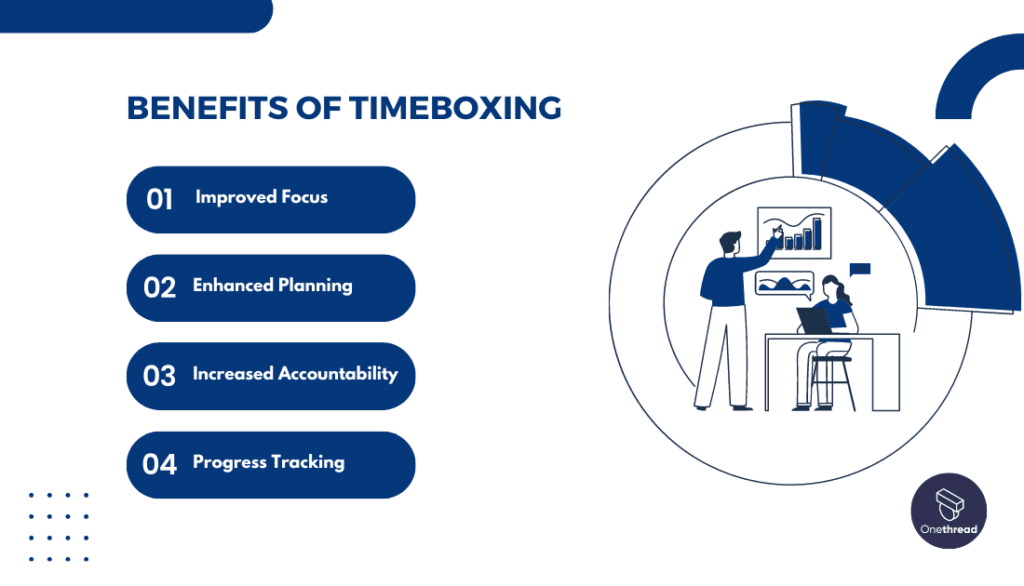



- Improved Focus: Timeboxing helps teams stay focused on the task at hand, reducing distractions and increasing productivity.
- Enhanced Planning: By allocating specific timeframes for activities such as meetings, planning sessions, and development tasks, timeboxing enables better planning and ensures efficient use of time.
- Increased Accountability: Timeboxing creates a sense of urgency and accountability among team members, as they are aware of the limited time available to complete the task.
- Progress Tracking: Setting timeboxes allows for better progress tracking, as teams can assess whether they are on track to meet their goals within the allocated time.
Timeboxing can be applied to various agile activities such as sprint planning, daily stand-ups, and retrospectives, enabling teams to work efficiently and deliver value within the given time constraints.
7. Ubiquitous Language in Agile Development
Significance and Application of Ubiquitous Language
Ubiquitous Language refers to a shared and consistent vocabulary used by all team members, including developers, stakeholders, and domain experts, in an agile development project. It ensures that everyone involved has a common understanding of the domain and the terminology used.
The significance of ubiquitous language in agile development includes:
- Reduced Miscommunication: Ubiquitous language minimizes misunderstandings and misinterpretations, as everyone uses the same terminology to describe domain concepts and requirements.
- Enhanced Collaboration: A shared language fosters effective collaboration and communication between team members, allowing for smoother knowledge transfer and problem-solving.
- Accelerated Development: By eliminating the need for translation between different vocabularies, ubiquitous language streamlines the development process, reducing delays and increasing efficiency.
- Improved Stakeholder Engagement: Ubiquitous language facilitates effective collaboration with stakeholders, as they can easily understand and contribute to discussions using the shared vocabulary.
Establishing and maintaining a ubiquitous language is crucial for agile teams to ensure alignment, improve productivity, and deliver high-quality software.
8. Unit Testing in Agile
In Agile frameworks and methodologies, unit testing is a fundamental practice that plays a crucial role in the development process. In unit testing, individual components or units of a software application are tested independently to ensure they function correctly.
These units are typically the smallest testable parts of the code, such as functions, methods, or classes. By conducting unit tests early and continuously throughout the development cycle, Agile teams can quickly identify and rectify defects, ensuring higher code quality and faster delivery of reliable software.
Importance and Practices of Unit Testing in Agile
Unit testing is a fundamental practice in agile development that involves testing individual units or components of code in isolation to ensure their correctness and functionality. Here’s why unit testing is important in Agile:
- Early Detection of Defects: Unit tests allow for the early detection of defects or issues within code units, preventing them from propagating to other parts of the system.
- Facilitates Refactoring: A comprehensive set of unit tests enables developers to refactor code confidently, knowing that any regressions will be caught by the tests.
- Supports Continuous Integration: Unit tests are integral to continuous integration practices, as they provide a reliable and fast way to validate changes and ensure overall system stability.
- Documentation and Code Understanding: Well-written unit tests serve as living documentation that demonstrates the behavior and usage of code units, making it easier for developers to understand and work with the codebase.
Agile teams should prioritize unit testing to ensure code quality, maintainability, and long-term project success.
What are the Different Types of Agile Methods?
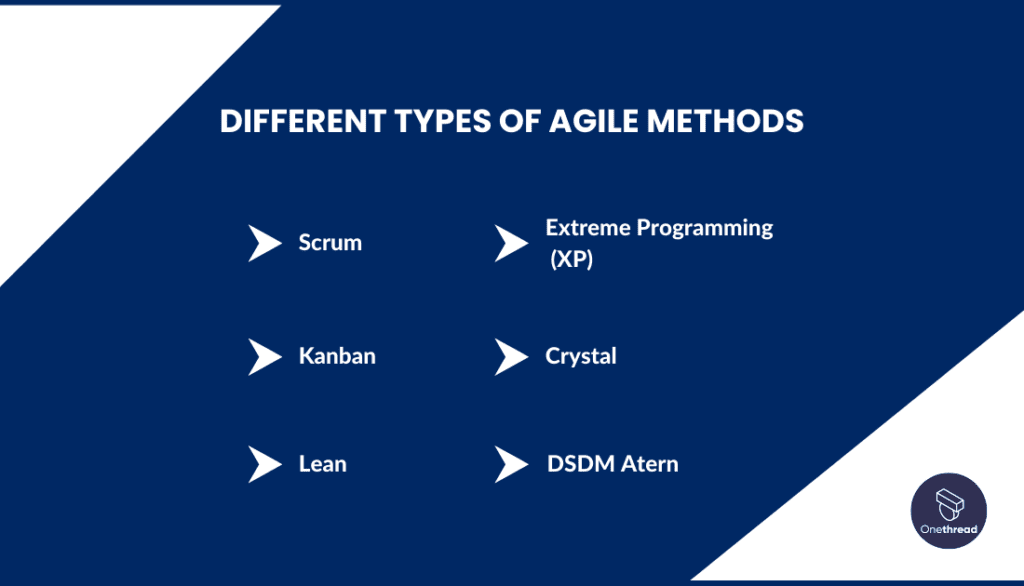



There are several types of Agile Methods, Which are.
- Scrum: One of the most popular Agile methodologies, Scrum emphasizes collaboration and iterative development. It is based on a framework that divides projects into small, manageable chunks called sprints. Each sprint focuses on delivering specific features or functionality within a fixed timeframe.
- Kanban: Kanban is all about visualizing work and optimizing flow. This methodology uses a board with columns to represent different stages of the project, such as “To Do,” “In Progress,” and “Done.” The goal is to limit work in progress (WIP) and ensure that tasks move smoothly through each stage without bottlenecks.
- Lean: Inspired by lean manufacturing principles, Lean-Agile aims to eliminate waste and improve efficiency in software development processes. It focuses on continuous improvement, value delivery, and customer satisfaction by streamlining workflows, minimizing delays, and maximizing productivity.
- Extreme Programming (XP): XP takes an extreme approach to Agile development by emphasizing close collaboration between developers and customers throughout the entire project lifecycle. This methodology promotes practices like pair programming, test-driven development (TDD), rapid feedback loops, continuous integration (CI), and frequent releases.
- Crystal: Crystal embraces flexibility while prioritizing people over processes or tools. This methodology recognizes that every project is unique and adapts accordingly based on its size, complexity, risks involved, team dynamics, etc.
- DSDM Atern: Dynamic Systems Development Methodology (DSDM) Atern provides a framework for delivering high-quality software solutions quickly while maintaining focus on business needs.
The primary goals are time-boxed iterations known as timeboxes, where teams complete certain activities such as requirements gathering, user design prototyping, and implementation.
How Does Agile Affect Project Management?
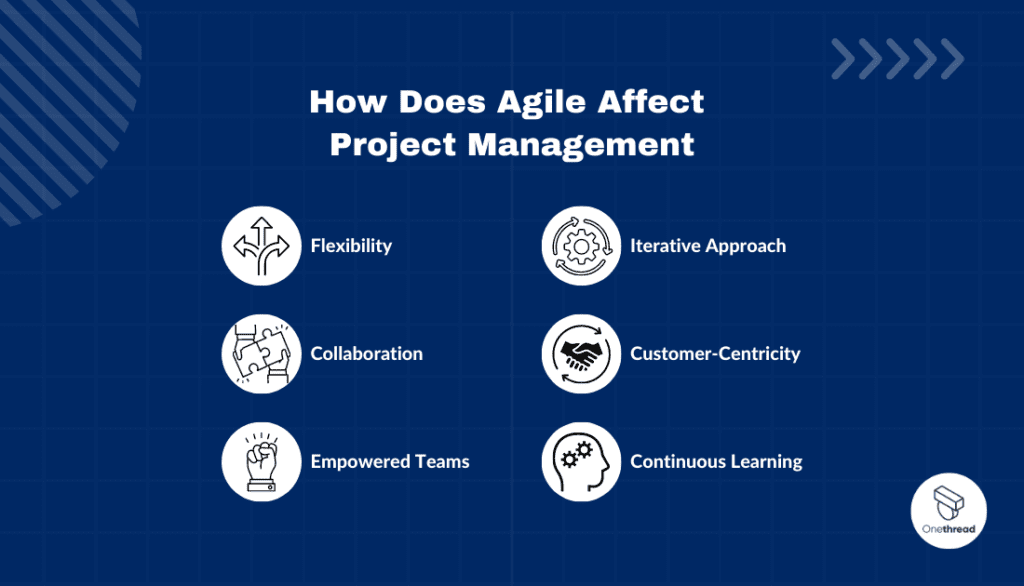



Agile is a game-changer when it comes to project management. It revolutionizes the traditional approach by prioritizing flexibility, collaboration, and adaptability. Here’s how Agile affects project management:
- Flexibility: Unlike traditional project management methods that follow a rigid plan, Agile embraces change throughout the process. This allows teams to respond quickly to new requirements or market demands.
- Collaboration: Agile emphasizes cross-functional teams working together in an iterative and incremental manner. Communication flows freely among team members, stakeholders, and customers, fostering transparency and alignment.
- Empowered Teams: In Agile, decision-making authority is distributed among team members rather than being centralized at the top. This empowers each individual to take ownership of their work and make autonomous decisions.
- Iterative Approach: Instead of waiting until the end of a project to deliver results, Agile breaks down projects into smaller iterations or sprints with tangible outputs delivered at regular intervals. This provides stakeholders with early visibility into progress and promotes continuous improvement.
- Customer-Centricity: Agile ensures that their needs are understood and met effectively by involving customers throughout the development process through techniques like user stories or prototypes.
- Continuous Learning: The iterative nature of Agile encourages frequent feedback loops for learning purposes so that adjustments can be made as needed based on real-time information.
Embracing an agile approach enables organizations to navigate complex projects more efficiently while fostering collaboration, adaptability, customer-centricity, and continuous learning within their teams.
Conclusion
This comprehensive guide has provided you with an extensive understanding of agile terminology and its significance in project management and software development. By embracing and applying these terminologies, teams can enhance collaboration, improve efficiency, and deliver high-quality products.
From foundational principles to advanced concepts like Kanban, persona-driven development, and incremental development, we have covered a wide range of topics to equip you with the knowledge needed to excel in agile methodologies. Remember to learn and explore new practices as agile evolves continuously.
By mastering agile terminologies, you can create a shared language that fosters effective communication and collaboration within your team. Embrace the power of agile terminology, and unleash the full potential of agile methodology in your projects.
FAQs
1. What is Agile methodology?
Agile methodology refers to a set of principles and values that prioritize collaboration, flexibility, and iterative development in project management. It emphasizes adaptability, customer satisfaction, and continuous improvement.
2. What are the different types of Agile methods?
Several popular Agile methods include Scrum, Kanban, Lean Development, Extreme Programming (XP), and Feature-Driven Development (FDD). Each method has its unique approach to managing projects and delivering value.
3. How does Agile affect project management?
Agile revolutionizes traditional project management by breaking down complex tasks into smaller iterations called sprints or iterations. It promotes regular communication between team members and stakeholders to ensure everyone remains aligned throughout the project’s lifecycle.
4. Can we combine different Agile methods?
Yes! Many organizations adopt hybrid approaches by combining elements from multiple Agile methodologies tailored to their specific needs. The key is finding the right mix that maximizes efficiency and productivity for your team.
5. How do you measure success in an Agile environment?
In an Agile environment, success is measured based on how effectively teams deliver value to customers within shorter timeframes, known as iterations or sprints. Key performance indicators such as velocity (the rate at which work is completed) and customer satisfaction scores help gauge success in this context.
